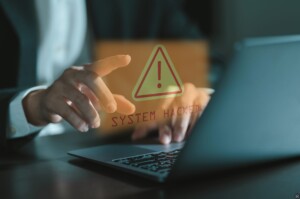Phishing attacks are evolving faster than ever. Cybercriminals are using advanced tactics, automation, and artificial intelligence to make their scams more convincing and harder to detect. As a result, even well-trained users can fall for messages that appear completely legitimate.
At Tech42, we help organizations stay ahead of these threats. Let’s look at the newest and most creative phishing scams making the rounds in 2025.
AI-Generated Phishing Messages
Artificial intelligence is now common in the workplace, but this also makes it a common weapon for cybercriminals. Attackers use AI tools to write convincing emails that mimic corporate language and tone. These messages often include realistic details pulled from public data such as LinkedIn profiles or company websites. AI can analyze large amounts of data and write unique emails for each company, while maintaining a professional voice and perfect language.
How to stay safe:
- Verify unexpected messages that reference internal projects or leadership names.
- Encourage employees to slow down and check sender addresses before responding.
- Implement managed detection tools that can identify subtle indicators of AI-authored content.
Deepfake Voice and Video Scams
The rise of deepfake technology has expanded phishing beyond email. Attackers can now create convincing voice and video clips that impersonate executives or partners. In 2024, deepfake-related phishing increased by 15%, with more growth expected this year.
How to stay safe:
- Always confirm unusual requests for funds or credentials using a secondary communication channel.
- Provide staff training to recognize indicators of deepfake manipulation such as unnatural speech rhythm or mismatched video cues.
Quishing (QR Code Phishing)
Phishing through QR codes, known as quishing, continues to surge, up 25% year over year. Attackers place malicious QR codes on posters, invoices, or even fake business cards that redirect users to credential-stealing websites.
How to stay safe:
- Avoid scanning QR codes from unknown or unverified sources.
- Use mobile security tools that preview URLs before opening them.
- Reinforce awareness that convenience often comes with hidden risk.
Multi-Channel Phishing
Email is no longer the only threat vector. Around 40% of phishing attempts now occur through collaboration tools like Slack, Microsoft Teams, or social media platforms. These channels allow attackers to appear as trusted colleagues or partners.
How to stay safe:
- Restrict file-sharing permissions and external access on business communication platforms.
- Remind employees to confirm new contacts through internal channels before engaging.
HTTPS and Fake Security Indicators
Nearly 80% of phishing websites now use HTTPS to appear authentic. The familiar padlock icon gives users a false sense of security, even when the site itself is fraudulent.
How to stay safe:
- Teach users that HTTPS does not guarantee safety.
- Double-check domain names for subtle misspellings or added characters.
- Use managed web filtering to block known malicious domains.
Protecting Your Business in 2025
The creativity and frequency of phishing attacks continue to rise, but awareness and preparation are your strongest defenses. Managed security services can help by monitoring email, managing identity systems, and training employees to spot emerging threats.
At Tech42, we provide comprehensive cybersecurity solutions that keep your business protected against the newest phishing tactics. From awareness training to real-time threat monitoring, our goal is to make your organization resilient in a constantly changing threat landscape.







